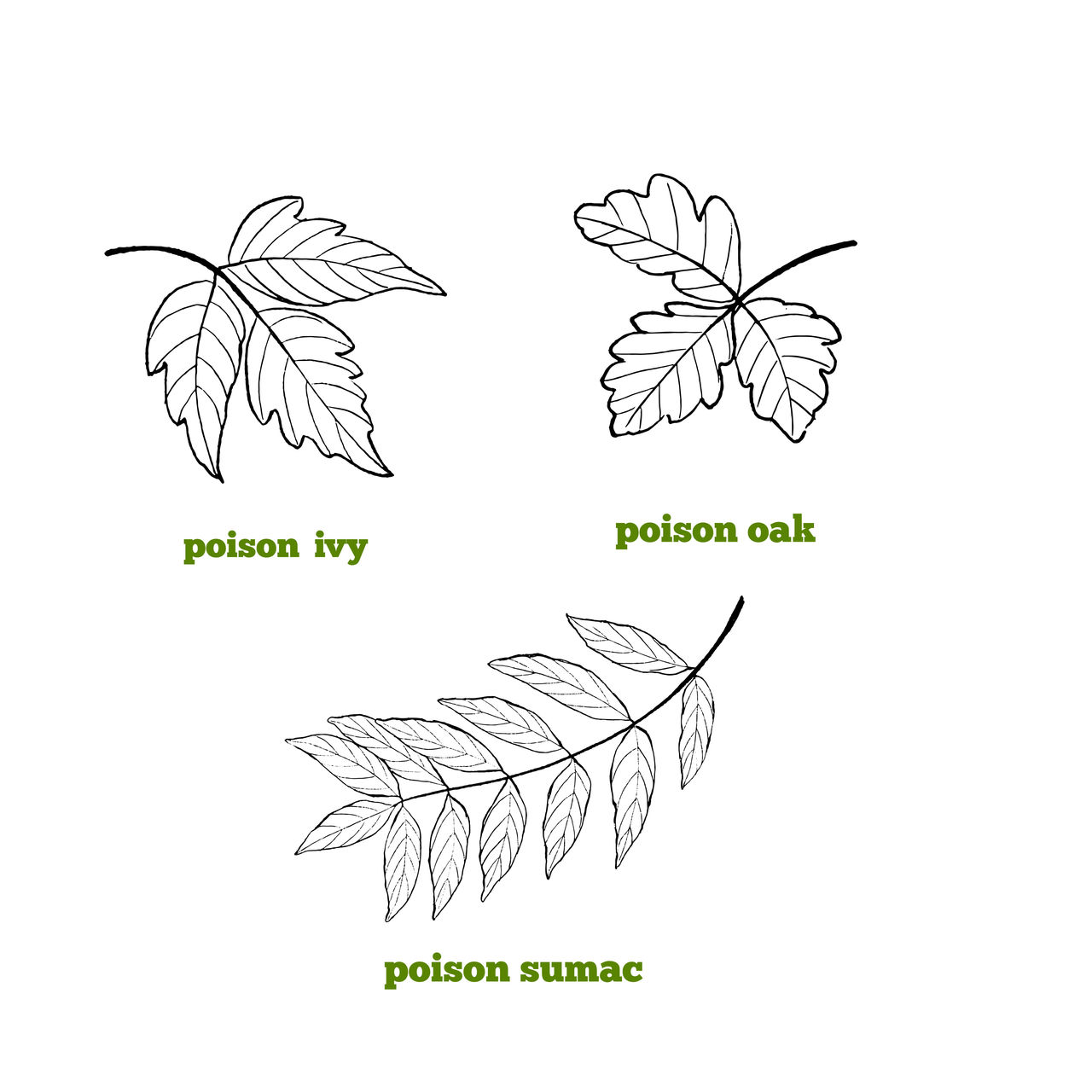
You've probably heard the saying: Leaves of 3, let it be. It's the life hack to help people who aren't plant experts identify poison ivy.
This poisonous plant is infamous for its potential to cause itchy, red rashes on those who touch it. But it's not the only wicked weed to look out for when spending time outside. Watch out for its cousins: poison oak and poison sumac.
These plants contain an oily resin called urushiol, according to NC State University’s College of Agriculture and Life Sciences. All parts of the plant contain the oil – not just the leaves – which is responsible for skin irritation. It can impact you if you touch the plant directly or indirectly by touching objects that have been contaminated, such as clothing or yard tools. And they can be harmful year-round, even when they’re dormant in the fall or winter.
“I knew right away that it was a reaction to poison ivy, because I had gotten it before,” said Krisanne Burks, a senior communications advisor at Blue Cross and Blue Shield of North Carolina (Blue Cross NC). “I was helping my husband with some yard work and got it mainly on my face and neck.”
Burks scheduled a visit with her primary care provider (PCP) for treatment.
“Wearing clothing and boots that protect your skin can be helpful to avoid contact with these poisonous plants, but if you’re going to be walking through heavily vegetated areas, you need to know your plants,” said Larry Wu, a medical director with Blue Cross NC. “Also, be careful with pets that have spent time in these areas because touching them can transfer the oils to your skin.”
These plants can be identified by their leaflets. Poison ivy has 3 leaflets, poison oak has 3 to 5 leaflets, and poison sumac has 7 to 13 pointed leaflets.

Itching and skin irritation are the first signs of exposure and can start within a few hours to several days.
If you determine that you may have encountered 1 of these plants, Wu said the first thing to do is immediately shower using soap to clean your entire body – especially the affected area.
The next step is to apply calamine lotion or an over-the-counter steroid cream to the infected area. If the symptoms persist, reveal blisters, or if you are having a facial reaction, then you should talk to your PCP. If your PCP isn’t available, use our Find Care tool to locate a nearby urgent care facility or schedule a telehealth appointment for virtual care.
It may take 2 to 3 weeks for the rash to heal, so be patient.
Finally, Wu says if the poisonous vegetation is on your property and you want to get rid of it, you should take precautions. Avoid direct contact with the plants and don’t burn them because inhaling the smoke can cause severe allergic respiratory problems. Be sure to wash clothing, tools, or any contaminated objects because the oils can linger until they are clean.
Learn to identify these poisonous plants so you can enjoy your time outdoors any time of the year. And to learn about another outdoor hazard, check out what to do if you are bitten by a copperhead snake.


Blue Cross and Blue Shield of North Carolina does not discriminate on the basis of race, color, national origin, sex, age or disability in its health programs and activities. Learn more about our non-discrimination policy and no-cost services available to you.
Information in other languages: Español 中文 Tiếng Việt 한국어 Français العَرَبِيَّة Hmoob ру́сский Tagalog ગુજરાતી ភាសាខ្មែរ Deutsch हिन्दी ລາວ 日本語
© 2025 Blue Cross and Blue Shield of North Carolina. ®, SM Marks of the Blue Cross and Blue Shield Association, an association of independent Blue Cross and Blue Shield plans. All other marks and names are property of their respective owners. Blue Cross and Blue Shield of North Carolina is an independent licensee of the Blue Cross and Blue Shield Association.
